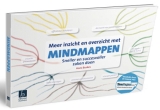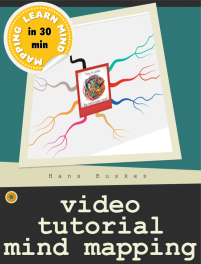 Suppose your favourite newspaper would apply a new reading experience to its columns. Halfway the page the direction of sentences is reversed. I know the brain can handle it, but 90 % of its readers would be annoyed.
Suppose your favourite newspaper would apply a new reading experience to its columns. Halfway the page the direction of sentences is reversed. I know the brain can handle it, but 90 % of its readers would be annoyed.
For some strange reason, this is exactly what a lot of mind mappers do. Reversing the logical order on the left hand side of the mind map. Now all mind mapper accept that mind maps are made clockwise. In principle you can read it in many ways, but “if there is an order to the information, you read it clockwise” (Jamie Nast, Idea mapping).
Roberta Buzzacchino reacted surprised when seeing my mind map History of mind mapping. She wrote: “the lay-out looked a bit peculiar to me”.
I really cannot understand it. On the right side of the mind map the branches cover the period up till 1994. Going to the left hand side of the mind map I start with 2001 and end with 2010. Roberta like many others would have expected it to start at 2010 and ending at 2001. So on the right hand side of the mind map you go forward in time and on the left hand side back in time? It makes no sense to me. It is not how the brain works.
 Look at the Goalscape diagrams depicting the flow of months and weeks clockwise and anticlockwise. What would you choose? React to this blog.
Look at the Goalscape diagrams depicting the flow of months and weeks clockwise and anticlockwise. What would you choose? React to this blog.
My suggestion, abandon software that works anti clockwise on the subbranches. Moreover use software that does follow brain logics.





I always work clockwise starting at 1 and going round the face. It is not good practice to have more than 7-8 first order branches so it is unlikely that you would run out of space. The second and third level branches should, in my opinion, go clockwise as well. The reason for this is that when you come to read a map the brain gets confused when you go past six o’clock and suddenly start using second order branches in a counter clockwise direction. There is no reason to do this. It creates reading and communication issues. Unfortunately most software cannot cope with the effective change in direction and starts to run counter clockwise.
In all my training sessions I encourage my delegates to run their maps clockwise for all levels of the branches to make reading and sharing easier.
Tim Fulford
Hi andrew,
The brain is a funny thing. Ones something is done a thousand times, the brain is accustomed to that. But is does not mean it is brain friendly and it is the best way.
I think there is no logic to reverse the direction of reading halfway the mindmap.
I have done al lot of research for my book on all kinds of ordering issues of mind mapping (organic, non-organic, single keywords, more keywords, clockwise/partly clockwise). Readers perceive the content quicker (and memorize it longer) when mind maps have single keywords (biggest effect), are organic (second biggest effect) and have a consequent ordering (the effect is not very big, but present).
Try it yourself!
I like the clockwise form. My principle software MindManager does this. Where it deviates from your final proposal is that the left hand sidedsubtopics go from top to bottom. I agree this is the reverse of clockwise logic but I think it is easier to read. However this could be 15 years of use. Occasionally I have rearranged branches to the logical form and I have been comfortable with it. However many of my maps are transformed in to something else Word docs, web sites and PowerPoint slides. The logical order produces the reverse of what is required in the final form. Perhaps I should ask Mindjet to invest in a switch!
Perhaps it is arguable that it’s good to jar the readers brain to keep their attention and make the experience of reading the map more memorable. Or perhaps not?